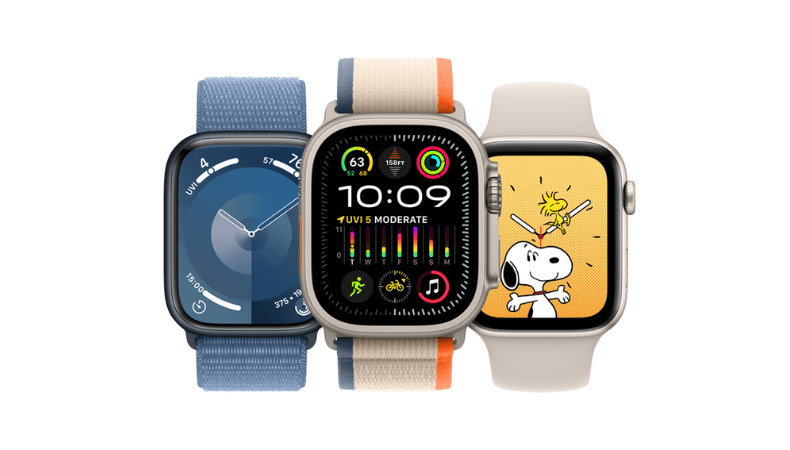Apple Watch Banned?: How Apple Keeps Its Smartwatch Edge without Infringing Masimo’s Patents

Apple Watch is one of the most popular and innovative smartwatches in the world, with features such as fitness tracking, health monitoring, and communication. However, Apple Watch also faces a legal challenge from Masimo, a medical device company that specializes in pulse oximetry, a technology that measures the oxygen level in the blood.
Masimo claims that Apple infringed on its patents and trade secrets when it developed the blood oxygen sensor for the Apple Watch Series 6 and later models. Masimo also accuses Apple of poaching its employees and customers, and of using its market power to stifle competition.
Masimo filed a lawsuit against Apple in January 2020, seeking damages and an injunction to stop Apple from selling the Apple Watch.
In October 2021, the US International Trade Commission (ITC) ruled in favor of Masimo, and issued an import ban on the Apple Watch Series 6 and later models, effective from December 26, 2021.
The ITC found that Apple violated two of Masimo’s patents, and that the ban would not harm the public interest or the competitive conditions in the US. The ban would prevent Apple from importing the Apple Watch from China, where it is manufactured, to the US, where it is sold.
The trigger and the reaction of the issue
The issue was triggered by the looming deadline of the import ban, which threatened to disrupt Apple’s sales and supply of the Apple Watch, especially during the holiday season. Apple appealed the ITC’s decision to the US Court of Appeals for the Federal Circuit, and asked for a stay of the ban pending the appeal. Apple argued that the ban would cause irreparable harm to its business and customers, and that it had a strong likelihood of success on the merits of the case.
However, the court denied Apple’s request for a stay on December 27, 2021, and upheld the import ban. The court said that Apple failed to show that it would suffer irreparable harm, and that Masimo had a valid claim of patent infringement. The court also said that the public interest favored the enforcement of patent rights, and that the ban would not affect the availability of other smartwatches or medical devices in the market.
Apple then proposed a redesign of the Apple Watch to avoid the import ban, by removing the blood oxygen sensor function from the device. Apple submitted its redesign proposal to the US Customs and Border Protection (CBP), which is responsible for enforcing the import ban. Apple claimed that its redesigned Apple Watch would not infringe on Masimo’s patents, and that it would comply with the ITC’s order.
The implications and the prospects of the issue
The issue has implications and prospects for the future of the Apple Watch and the smartwatch industry, as well as for the patent system and the trade policy. On one hand, the issue could affect Apple’s reputation and revenue, as well as its customers’ satisfaction and loyalty.
On the other hand, the issue could also spur Apple’s innovation and creativity, as well as its legal and technical strategies.
Some of the possible outcomes and scenarios of the issue are as follows:
- Apple’s redesign proposal is approved by the CBP, and Apple resumes the import and sale of the Apple Watch without the blood oxygen sensor function. This would allow Apple to avoid the import ban and to continue to offer the Apple Watch to its customers, albeit with a reduced functionality. However, this would also mean that Apple would lose one of its key features and advantages over its competitors, and that it would face a backlash from its customers who expected and paid for the blood oxygen sensor function.
- Apple’s redesign proposal is rejected by the CBP, and Apple faces the import ban and the lawsuit from Masimo. This would force Apple to stop the import and sale of the Apple Watch until the resolution of the case, which could take months or years. This would also mean that Apple would lose a significant portion of its smartwatch market share and revenue, and that it would face a potential damage award and an injunction from Masimo. Moreover, this would also mean that Apple would have to find a new way to incorporate the blood oxygen sensor function into the Apple Watch without infringing on Masimo’s patents, or to license the technology from Masimo or another provider.
- Apple and Masimo reach a settlement and a licensing agreement, and Apple resumes the import and sale of the Apple Watch with the blood oxygen sensor function. This would enable Apple to avoid the import ban and the lawsuit, and to continue to offer the Apple Watch with the blood oxygen sensor function to its customers. However, this would also mean that Apple would have to pay a royalty fee and a lump sum to Masimo, and that it would acknowledge Masimo’s patent rights and validity. Furthermore, this would also mean that Apple would have to share the blood oxygen sensor market and technology with Masimo and other licensees.
The issue of the Apple Watch ban is a complex and contentious issue that requires careful and prudent handling and management, as well as constant and constructive dialogue and consultation, among all the parties involved. The issue of the Apple Watch ban is not only a matter of technology, but also a matter of law, business, and policy.
The issue of the Apple Watch ban is not only a bilateral issue, but also a global issue that affects the interests and the values of many countries and actors. The issue of the Apple Watch ban, therefore, is a challenge and an opportunity for Apple, Masimo, and the world.




